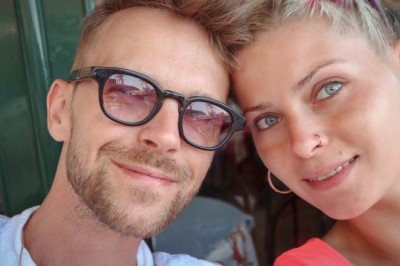The history of Mbeya
Mbeya was founded as a gold mining town in the 1920s. The TAZARA railway soon drawing farming migrants and small entrepreneurs to the area. Mbeya and its district were administered by the British until 1961. Mbeya Region was created in 1961. Local government is administered via the Mbeya Urban District authority and a Regional Commissioner.
Mbeya is a city in Tanzania situated at southwest. According to the statistical of 2005 the urban population of this city was 280,000. Mbeya is the capital of the surrounding rural Mbeya region.
Mbeya is the first large urban settlement met when traveling overland from the nearby nation of Zambia. Mbeya is situated at an altitude of 1,700m and sprawls through a narrow highland valley surrounded by a bowl of high mountains. The main language is informal Swahili and the English language is extensively taught in schools.
Mbeya is the coolness region, its range the temperature of between -6?C in the highlands and 29?C on the lowlands. Mbeyas cooler climate can be unreliable in terms of sun exposure - sun screen lotion is suggested when mountaineering, even in what seems to be cloudy weather. The best weather is from June until October, when it is dry and warm.
The area enjoys plentiful and reliable rainfall which stimulates plentiful agriculture on the rich volcanic soils. Average rainfall per year is around 900mm. The rainy season is from November to May. It is cool and foggy in Mbeya much of the time. Sometimes visitors will need warm clothing, such as a sweater or hat, to keep warm.
Mbeya has different tribes these include Nyakusa, Ndali, malila, Bungu, Safwa, and other tribes from the nearby region, Iringa these are such as Hehe, Bena, Kinga etc. But many of these groups are living at out side the Mbeya town.
Services and ridged iron roofing are apparently the main business activities, after smallholder agriculture. The most cultivated crops in this region include maize, rice, bananas and potatoes. Tanzania has a free market in agricultural produce, and Mbeya transports vast amounts of its maize to other areas of Tanzania. There is also extensive animal husbandry, with dairy cattle predominating. High-value export crops are also grown, such as tea and coffee. There is some smallholder cultivation of tobacco Firewood is collected by women and girls, from the wooded valleys and mountainsides. Bamboo is naturally plentiful in the forests, and there are plans to teach local people about this versatile plant and its many uses. Some gold is still mined in the rural Chunya District, by artisan miners. There are also number of schools, hotels, a regional police headquarters, and several petrol stations in Mbeya. As well as the usual shops, there is a fixed vegetable and fresh produce marketplace. Among all regions in Tanzania Mbeya is the one which has many different kinds of Religions.
Mbeya region has different college and university such as Teofilo Kisanji University which is the young Moravian Church in Tanzania offering courses in theology and educational sciences thus training pastors and teachers so far. It has established since 2005. The college is situated at SOWETO village.
Mbeya Institute of Science and Technology (MIST) is a public institution offering degrees, advanced diplomas and ordinary diplomas in various courses of engineering discipline. It has changed from former Mbeya Technical College (MTC). The College is at Iyunga area.
Mzumbe University (MU) Mbeya Campus is situated in Forest area next to the Bank of Tanzania; it offers bachelors degree and diploma in law.
Tanzania Institute of Accountancy (TIA) is another public University offering advanced diplomas and ordinary diplomas in Accountancy, Procurement and Material Management. The Institution is located at the Mafiati area along the Tanzania-Zambia Highway and nearly to the Mbeya air port.
Also there is another college of agricultural, called Agricultural Research Institute (ARI) which is situated at Uyole village. VETA Southern Highland Zonal Centre is another vocational training college at Ilomba area.
Mbeya has been called the Scotland of Africa it contains different and good natural features, such as Mountain and rivers, there is the nearest mountain in called Loleza which rises over the town. The highest mountain in mbeya and the third mountain in Tanzania is mount Rungwe, this mountain contain other ten or more dominant volcanic crate and domes. The most notable individuals in this mountain are Rungwe Bush Viper and Colobus monkeys. A completely new species of large monkey was discovered living in the southern highlands to the south-west of Mbeya. In mbeya there is four big river which are Kiwira, Katumba, Tukuyu and Kandete, All streams from the north, west and southwest flow into the Kiwira River. These streams include the Marogala, Sinini, Kipoke, Kilasi and Mulagala. In the southeast is the source of the Mbaka River, with the Suma River feeding into it. In the east the Mrambo and the Mwatisi flow out of the reserve. All of the above rivers flow into Lake Nyasa. The regions rivers are clear and fresh.
The best time to visit Mbeya is from June until October, when it is warm. Mbeya can be reached by bus services along tarmac roads, or via the TAZARA railway line. There are game watching safaris, and also trout fishing in the mountains to the south. Mbeya is the best place in Tanzania for hiking and forest walking; which is aided by the cooler climate, friendly villages and pure clear water in the river catchments. Well-defined hiking trails have been established to enable hikers to reach the elevated areas and bio-diverse highlands, although the trails need to be properly mapped.
For more information on visiting Tanzania contact Wild Things
For more information on visiting Tanzanias mountains contact Mountain Kingdom
--
Tanzania http://www.wildthingsafaris.com . http://www.mksafaris.com .





















